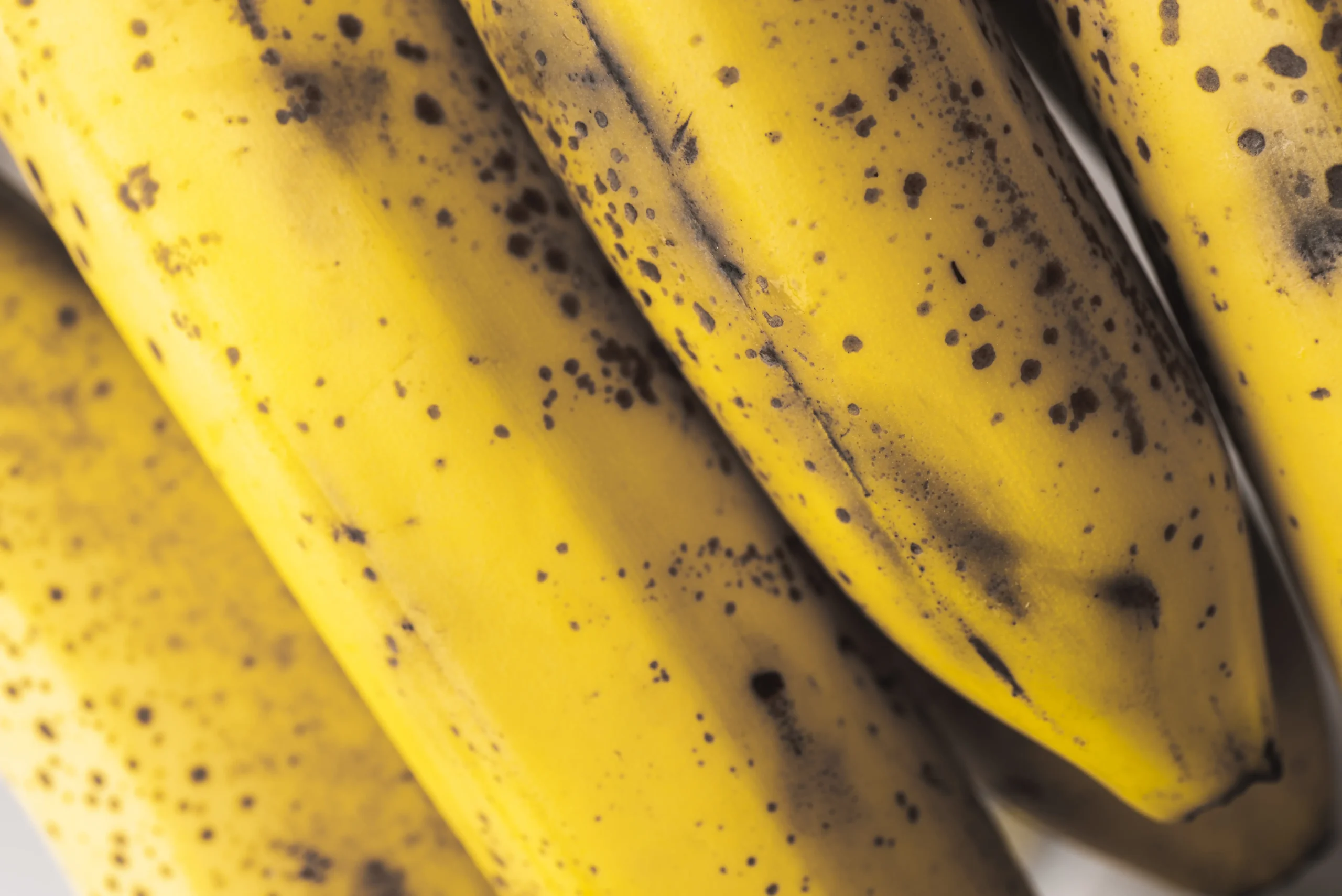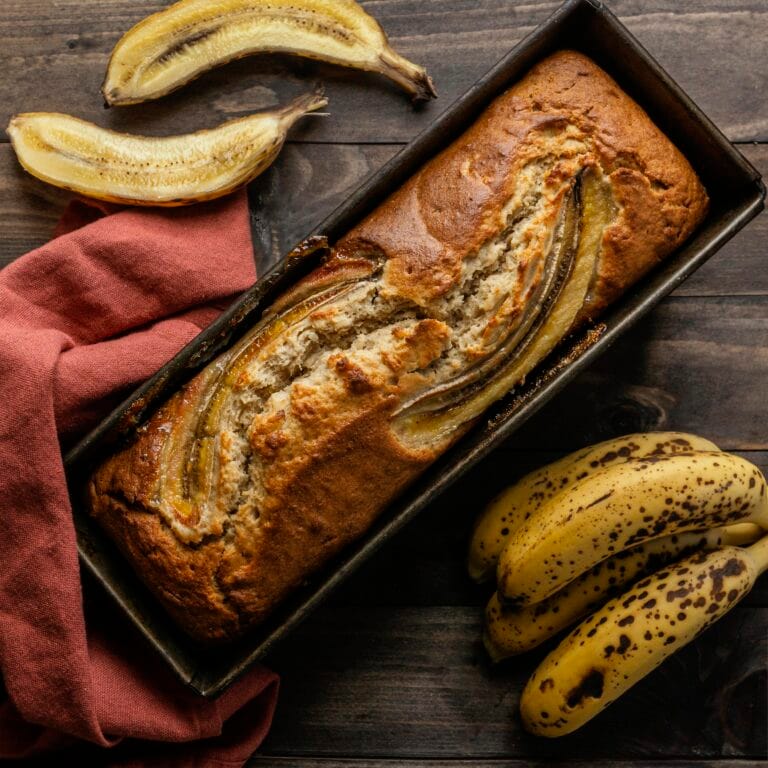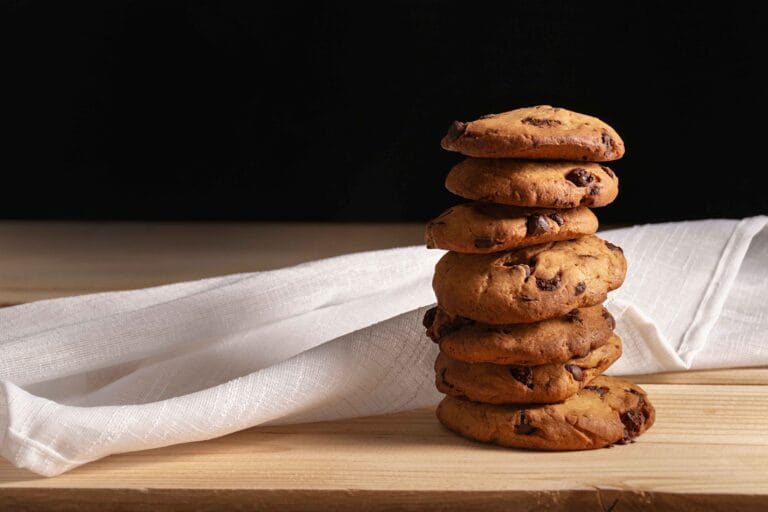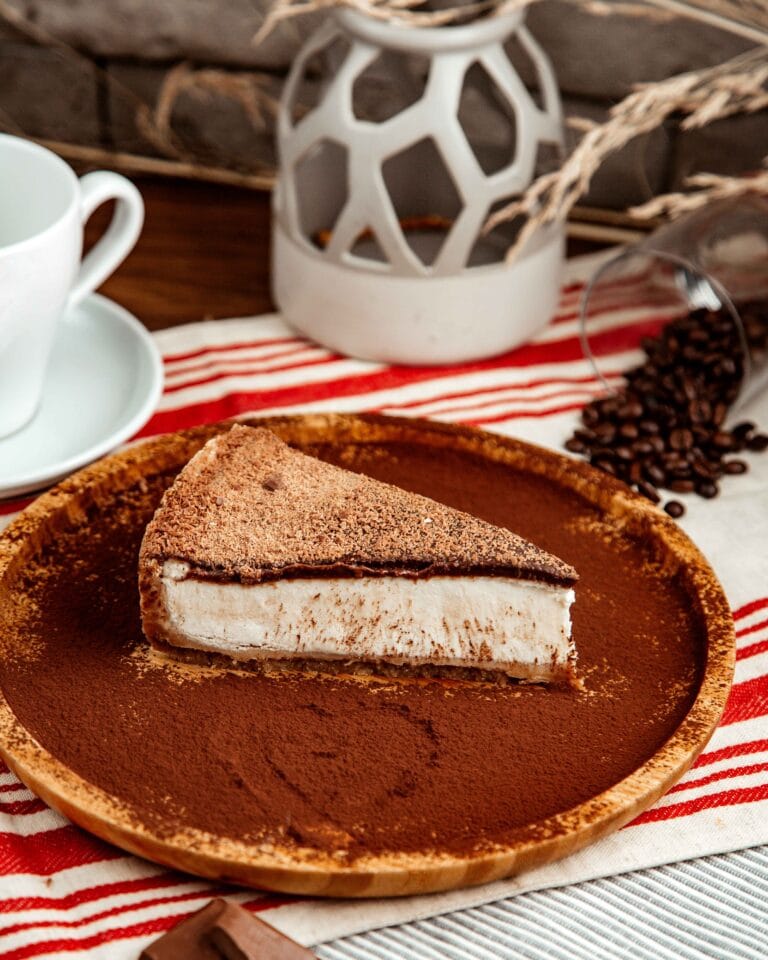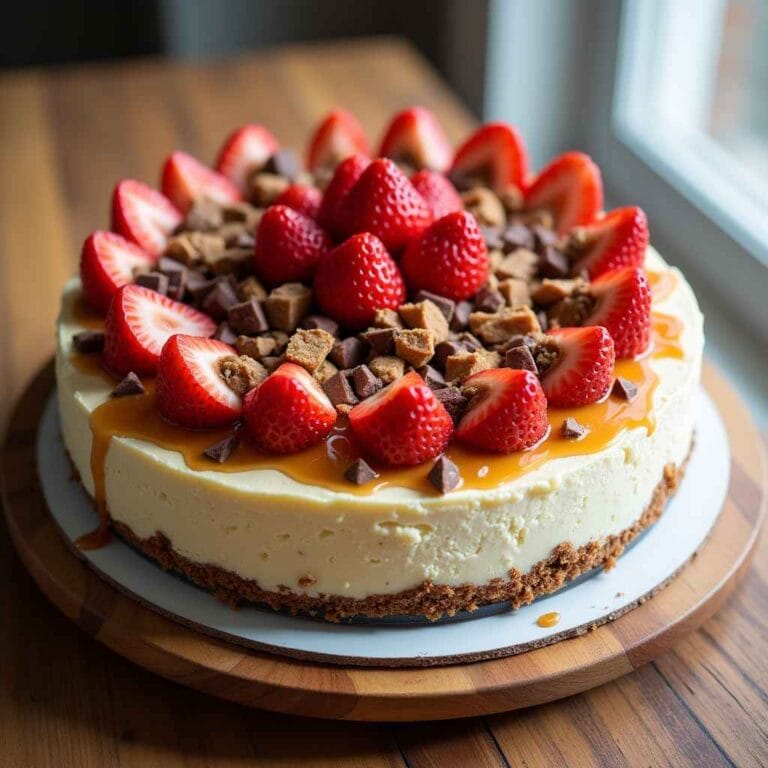How Ripe Should Bananas Be for Banana Bread
Banana bread is one of the most comforting and versatile baked goods, loved by people of all ages. The secret to a perfect loaf lies not just in the recipe but in the ripeness of the bananas. Many home bakers wonder, “How ripe should bananas be for banana bread?” The answer can make the difference between an ordinary loaf and one that’s incredibly moist, flavorful, and aromatic.
In this guide, we’ll explore everything you need to know about choosing the right bananas for banana bread. From understanding the stages of ripeness to tips for ripening bananas at home, we’ll ensure your banana bread turns out perfect every time.
The stage of ripeness for bananas directly affects the taste, texture, and sweetness of banana bread. While underripe bananas can result in a bland and dense loaf, overly ripe bananas might overwhelm the recipe or lead to unpleasant bitterness. The key is to find the sweet spot where bananas have just the right balance of natural sugar and moisture.
In this article, we’ll cover the science behind banana ripeness, how to identify the perfect bananas, and what to do if your bananas are too ripe or underripe. Whether you’re a seasoned baker or new to banana bread, this guide will equip you with the knowledge you need to bake the best loaf every time.
For a detailed guide covering everything from ripeness to creative add-ins, check out Simply Recipes Banana Bread: A Complete Guide.
Understanding Banana Ripeness
Bananas go through several distinct stages of ripeness, each with unique characteristics that influence how they perform in recipes. Identifying the right stage for banana bread is essential, as ripeness impacts the flavor, texture, and sweetness of your loaf. Let’s break down the ripeness stages and their suitability for baking.
Green Bananas : Green Bananas: Why They’re Not Suitable for Banana Bread Recipes
Green bananas are firm, starchy, and lack the sweetness needed for banana bread. They contain a high amount of resistant starch, which hasn’t yet converted into sugar.
- Why Green Bananas Don’t Work:
The texture of green bananas is too hard to mash, and their starch content prevents them from integrating smoothly into a batter. Additionally, their flavor is mild and unripe, leading to a bread that tastes flat and lacks the characteristic sweetness of banana bread. - When to Avoid:
Green bananas are best left for savory dishes or for those looking to boost their fiber intake, as the resistant starch has health benefits but isn’t suitable for banana bread.
Yellow Bananas : Yellow Bananas: Can They Work for Baking Delicious Banana Bread?
Yellow bananas are fully ripe and easier to mash compared to green ones. They have a mild sweetness and softer texture, but they’re not yet at their peak for banana bread.
- The Benefits of Yellow Bananas:
Yellow bananas work well in some recipes, especially if you’re looking for a milder banana flavor. They’re also ideal if you’re baking banana bread for those who prefer a less intense banana taste. - The Drawbacks:
While yellow bananas add a hint of sweetness, they lack the deep, caramelized flavor that spotted or overripe bananas bring to the table. If your bananas are yellow, you can wait a couple of days for them to ripen further or use techniques to speed up the process.
Spotted Bananas : The Best Choice for Moist and Flavorful Banana Bread
Spotted bananas are widely regarded as the perfect ripeness for banana bread. These bananas have developed brown or black spots on their yellow skin, indicating that the starches have broken down into natural sugars.
- Why Spotted Bananas Are Ideal:
Spotted bananas are soft, sweet, and bursting with flavor. Their texture makes them easy to mash, and their high sugar content enhances the sweetness of the bread. The spots also signify that the banana has reached the optimal point for caramelization during baking, contributing to a richer taste. - How to Identify:
Look for bananas with a mostly yellow base and a significant number of brown spots. If they’re heavily spotted but still firm to touch, they’re perfect for baking.
Overripe Bananas : When They’re Perfect and When They’re Too Far Gone
Overripe bananas are entirely brown or black, and their insides may be extremely soft or mushy. These bananas are on the edge of being too ripe, but they can still work wonders in banana bread under the right circumstances.
- Advantages of Overripe Bananas:
The ultra-soft texture of overripe bananas makes them easy to blend into a batter, and their sugar content is at its highest. This stage is perfect for creating a moist and intensely flavored banana bread. - When They’re Too Ripe:
If bananas have started to ferment, emit a sour smell, or show signs of mold, they should not be used. These conditions indicate they’ve passed their prime and could negatively affect the taste and safety of your bread.
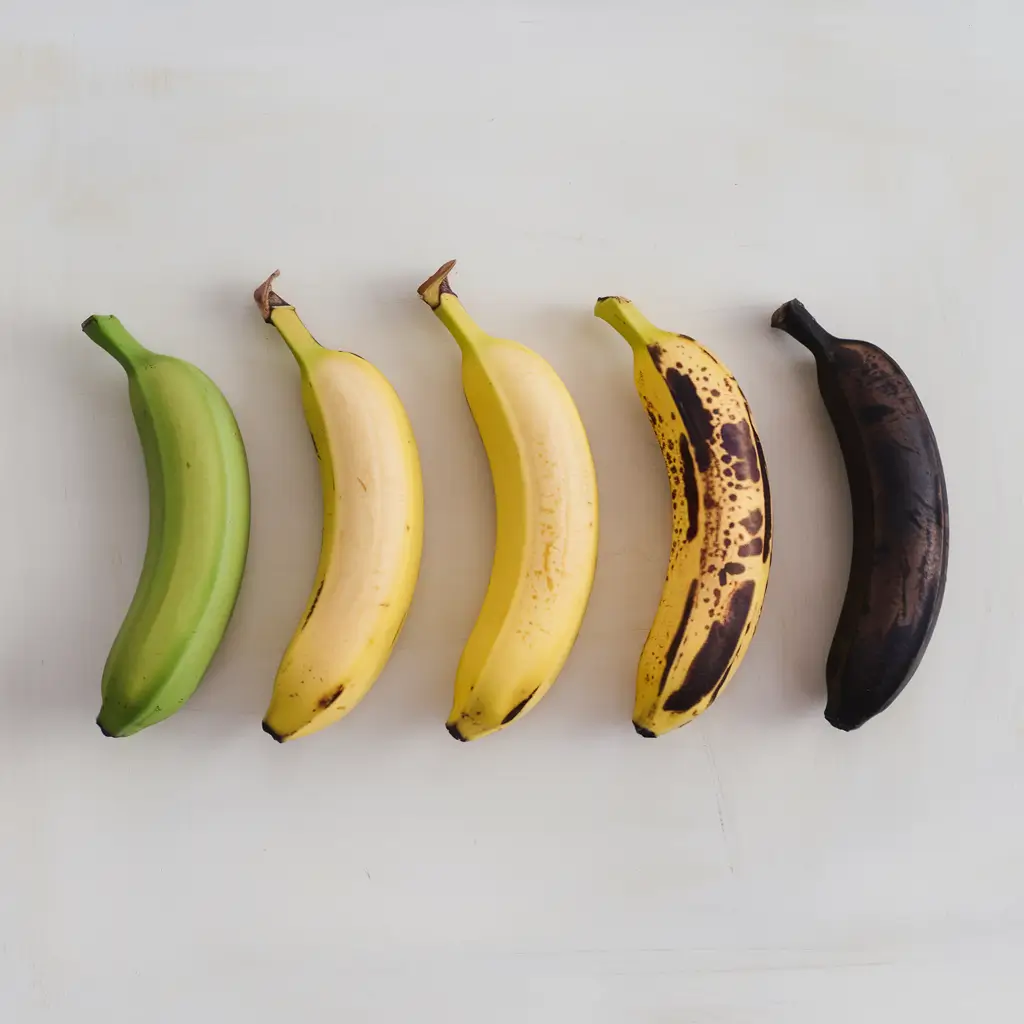
While overripe bananas enhance sweetness, it’s important not to use too many, as this can affect the bread’s texture. Learn more about balancing banana quantity here.
Why Ripe Bananas Matter for Banana Bread
Baking banana bread is as much an art as it is a science. The choice of banana ripeness determines not only the bread’s flavor but also its texture, moisture level, and sweetness. Using the right bananas can transform your loaf into a masterpiece.
Why Ripe Bananas Matter for Banana Bread
Banana ripeness is more than just a preference; it’s a critical factor that determines the quality of your banana bread. Ripe bananas undergo chemical changes that enhance their sweetness, soften their texture, and create flavors that are essential for the perfect loaf.
Natural Sugars in Bananas
As bananas ripen, the starch content within them gradually converts into natural sugars. This process results in the sweet taste associated with ripe and overripe bananas.
- Enhanced Sweetness:
Ripe bananas naturally sweeten banana bread, reducing or even eliminating the need for additional sugar. This is especially beneficial for those looking to create healthier versions of banana bread without sacrificing flavor. - Caramelized Notes:
The natural sugars in ripe bananas caramelize when baked, creating the deep, rich flavor that makes banana bread so irresistible. - Balanced Sweetness:
If bananas are too ripe or overripe, the sweetness can become overpowering. Properly ripe bananas ensure a balanced sweetness that complements other ingredients like cinnamon, vanilla, and nuts.
Moisture Content
Bananas also contribute significantly to the moisture of banana bread, and this moisture level changes with ripeness.
- Softening with Ripeness:
Ripe bananas have a higher water content compared to unripe bananas, making them easier to incorporate into a batter. This results in a softer, more cohesive dough and a moist loaf. - Avoiding Dryness:
Using bananas that are not ripe enough can lead to a dry, crumbly bread since they lack sufficient moisture. Meanwhile, overly ripe bananas can make the batter too watery, potentially affecting the bread’s texture and structure.
For the best rise and texture, precise measurements of baking soda are crucial. Learn why overusing baking soda can affect your loaf.
Banana Bread Flavor Profiles
The flavor profile of banana bread is directly tied to the ripeness of the bananas.
- Mild Yellow Bananas:
If you prefer a subtle banana flavor, slightly yellow bananas are a better choice. However, this may lead to a less pronounced banana taste. - Deep and Intense Flavor:
For a traditional banana bread flavor, spotted or overripe bananas are ideal. The caramelized sugars and soft texture create a pronounced banana taste that pairs well with complementary flavors like chocolate chips or walnuts. - When Ripeness Goes Too Far:
Overripe bananas can sometimes develop a tangy or fermented taste, which may overpower the bread and make it less enjoyable.
How to Choose the Right Bananas
Selecting the perfect bananas for banana bread is both an art and a science. By understanding ripeness and using a few handy techniques, you can ensure your bananas are always ready when the baking mood strikes.
Spotting the Perfect Ripeness
To identify the ideal bananas for banana bread:
- Look for bananas with a yellow base and plenty of brown or black spots.
- Check the texture by gently pressing the banana; it should feel soft but not mushy.
- The banana should emit a strong, sweet aroma, indicating high sugar content.
Speeding Up Ripening
Sometimes, you might find yourself with bananas that are too green for immediate use. Here are a few ways to speed up the ripening process:
- Paper Bag Method: Place bananas in a paper bag with an apple or avocado. The ethylene gas released by the fruits accelerates ripening.
- Oven Method: Bake bananas in their peels at 300°F (150°C) for 15–20 minutes. This softens and sweetens them, mimicking the effects of natural ripening.
- Microwave Method: Prick the peel with a fork and microwave the banana for 30–60 seconds. While this method isn’t ideal for flavor, it works in a pinch.
Storing Bananas
To ensure you always have ripe bananas on hand:
- Store bananas at room temperature to encourage ripening.
- Once they reach the desired ripeness, place them in the refrigerator to slow further ripening. The peel may turn black, but the fruit inside will remain perfect for baking.
- For long-term storage, peel and freeze ripe bananas.
What to Do with Overripe Bananas
Sometimes bananas become too ripe to use in traditional banana bread recipes. However, overripe bananas are incredibly versatile and can still be put to good use in the kitchen. Their soft texture and heightened sweetness make them perfect for a variety of culinary applications.
Freezing Bananas
Freezing is an excellent way to preserve overripe bananas for future use.
- How to Freeze Bananas:
- Peel the bananas to avoid a messy thaw later.
- Place them in a single layer on a baking sheet to freeze individually.
- Once frozen, transfer them to an airtight bag or container to save space.
- Usage Tips:
Frozen bananas are ideal for smoothies, ice cream, or thawing later to use in banana bread. For recipes, let them thaw at room temperature or microwave them for a few seconds.
Alternative Recipes
Overripe bananas shine in various recipes beyond banana bread.
- Smoothies and Milkshakes:
Add frozen bananas to smoothies for a creamy, naturally sweet base. Pair them with ingredients like almond milk, peanut butter, and cocoa powder for a nutritious drink. - Banana Pancakes:
Mash overripe bananas into pancake batter for a delicious twist. They enhance both the sweetness and fluffiness of the pancakes. - Banana Muffins:
Create moist banana muffins by swapping out bananas for part of the sugar and fat in the recipe. These are perfect for on-the-go snacks or breakfasts. - Banana Ice Cream:
Blend frozen bananas alone or with additional flavors like vanilla or chocolate for a guilt-free, creamy dessert.
Composting Bananas
If bananas have gone far beyond their prime and are no longer suitable for consumption, composting is an eco-friendly option.
- Why Compost Overripe Bananas:
Their high potassium content makes them an excellent addition to compost piles, enriching the soil for your garden. - How to Compost:
Chop bananas into small pieces to accelerate decomposition. They can be added to compost bins or directly to the soil as a natural fertilizer.
Frequently Asked Questions
As banana bread continues to be a favorite baked good, questions about banana ripeness arise often. Let’s address some common inquiries to clear up any confusion.
Can I Use Green Bananas?
Answer: Green bananas are not suitable for banana bread. They are too firm, low in sugar, and starchy, which results in bland and dense bread. Wait for them to ripen naturally or use a quick-ripening method if you’re in a hurry.
What if My Bananas Are Too Ripe?
Answer: Bananas that are fully blackened but free from mold or fermentation are still usable in banana bread. For extremely overripe bananas, consider freezing them or using them in smoothies or muffins.
Do I Need Organic Bananas?
Answer: Organic bananas are not a requirement for banana bread. Both organic and conventional bananas work well, though organic bananas may appeal to those who prefer fewer pesticides in their produce.
Can I Use Frozen Bananas?
Answer: Yes, frozen bananas are an excellent option for banana bread. Thaw them completely and drain any excess liquid before incorporating them into your batter.
How to Choose the Right Bananas
Banana bread success often hinges on selecting the perfect bananas. Beyond simply spotting ripeness, there are several techniques to ensure your bananas are always at their best for baking.
Spotting the Perfect Ripeness
Ripe bananas are your best bet for achieving moist, flavorful banana bread. Here’s how to recognize them:
- Visual Indicators: Bananas with a bright yellow base and brown or black spots are ideal. Too few spots may indicate insufficient sweetness, while entirely black bananas might have gone too far.
- Texture Check: The bananas should feel soft but not mushy when gently squeezed. If they’re mushy to the point of leaking, they might be past their usable stage.
- Aroma Test: A sweet, fruity aroma is a reliable sign of ripeness. Bananas lacking a distinct smell are likely too underripe.
Speeding Up Ripening
If your bananas are not quite ripe enough but you’re eager to bake, there are simple tricks to accelerate the ripening process:
- Use a Brown Bag: Place bananas in a paper bag with another ethylene-producing fruit, such as an apple or avocado. The trapped ethylene gas speeds up ripening.
- Warm Oven Technique: Preheat your oven to 300°F (150°C). Place unpeeled bananas on a baking sheet and bake for 15–20 minutes, until the skins are blackened. Let them cool before peeling and mashing.
- Microwave Shortcut: Prick the banana peel a few times with a fork, then microwave on high for 30–60 seconds. This softens the bananas, though it may not develop the same flavor as natural ripening.
Storing Bananas
Proper storage ensures you always have ripe bananas ready when the urge to bake strikes.
- Room Temperature: Store bananas at room temperature for natural ripening. Avoid keeping them in direct sunlight, which can cause uneven ripening.
- Refrigeration: Once bananas reach your desired ripeness, place them in the refrigerator. The peel may darken, but the fruit will remain stable for several days.
- Freezing: Peel ripe bananas, store them in an airtight container or bag, and freeze for up to six months. Frozen bananas are perfect for baking after being thawed.
Pro Tips for Moist, Flavorful Banana Bread
Banana ripeness is just one piece of the puzzle. Here are additional tips to elevate your banana bread to bakery-quality perfection.
Add Flavor Enhancers
Boost the flavor of your banana bread with complementary ingredients:
- Spices: Cinnamon, nutmeg, and allspice pair wonderfully with banana bread.
- Extracts: A splash of vanilla or almond extract enhances the natural sweetness.
- Mix-ins: Walnuts, chocolate chips, shredded coconut, or dried fruits add texture and depth.
Achieve the Perfect Texture
Texture is key to great banana bread. Follow these guidelines:
- Don’t Overmix: Overmixing the batter can lead to dense bread. Mix wet and dry ingredients just until combined.
- Use the Right Pan: A nonstick loaf pan or one lined with parchment paper ensures easy release and even baking.
- Monitor Baking Time: Banana bread typically bakes at 350°F (175°C) for 50–65 minutes. Check doneness with a toothpick inserted into the center; it should come out clean or with a few moist crumbs.
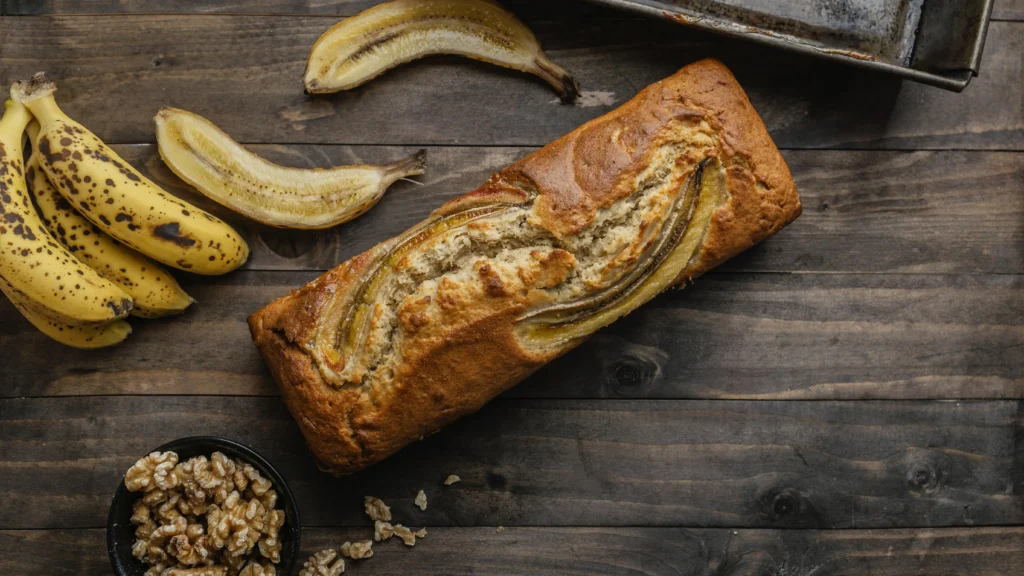
Customize Sweetness Levels
Adapt the recipe to your sweetness preference:
- For Less Sweet Bread: Use bananas that are just beginning to brown and reduce added sugar in the recipe.
- For Sweeter Bread: Use fully spotted or blackened bananas to maximize natural sweetness. You can also sprinkle sugar on top before baking for a caramelized crust.
Frequently Asked Questions
To ensure you have all the information you need for perfect banana bread, here are answers to common questions about banana ripeness and usage.
Can I Use Green Bananas for Banana Bread?
Answer: No, green bananas are not suitable for banana bread. Their firm texture and high starch content make them difficult to mash and integrate into the batter. They also lack the natural sweetness needed to enhance the bread’s flavor. It’s best to wait until they ripen or use a quick-ripening method if you’re in a hurry.
What Happens If My Bananas Are Too Ripe?
Answer: Bananas that are blackened but free of mold and a fermented smell are still usable. In fact, they’re ideal for banana bread due to their enhanced sweetness and ultra-soft texture. However, bananas that have become moldy, slimy, or emit a sour odor should not be used.
Can I Use Frozen Bananas?
Answer: Yes, frozen bananas work perfectly for banana bread. Allow them to thaw at room temperature or in a microwave. Be sure to drain any excess liquid before mashing them, as this can affect the batter’s consistency.
Does It Matter If My Bananas Are Organic?
Answer: Organic bananas are not a requirement for banana bread. The choice between organic and conventional bananas boils down to personal preference. Both types provide the same results in terms of sweetness, texture, and flavor.
How Can I Ripen Bananas Quickly?
Answer: To ripen bananas quickly, use methods such as the paper bag trick (placing bananas in a bag with an ethylene-producing fruit) or the oven method (baking unpeeled bananas at 300°F for 15–20 minutes).
Conclusion
When it comes to banana bread, the ripeness of the bananas is a game-changer. Bananas that are spotted or slightly overripe provide the perfect blend of natural sweetness, moisture, and flavor that defines the best banana bread.
Understanding how ripeness affects the texture and taste ensures that your banana bread turns out delicious every time. Whether you’re selecting bananas at the store or managing their ripeness at home, these tips empower you to bake with confidence.
So, the next time you spot bananas with those characteristic brown flecks, you’ll know they’re destined for a loaf of homemade banana bread. Happy baking!
Understanding banana ripeness is key to crafting delicious banana bread. Dive deeper into choosing the perfect bananas for your recipes.

